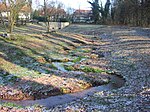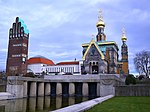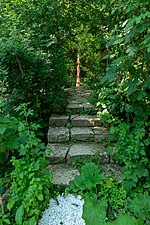Jagdschloss Kranichstein
Baroque architecture in HesseBuildings and structures completed in the 1570sCastles in HesseHotels in GermanyMuseums in Darmstadt ... and 1 more
Renaissance architecture in Germany

Jagdschloss Kranichstein is a palace in Kranichstein, now part of Darmstadt, Hesse, Germany. It was built north of Darmstadt from 1578 as a Jagdschloss, a hunting lodge for George I, Landgrave of Hesse-Darmstadt. It served also as a summer residence. In 1917, it became a museum of hunting. From 1946, it was the first location of the Darmstädter Ferienkurse. The estate is one of few remaining Baroque hunting lodges in Germany, referred to also as Kranichstein Hunting Lodge. It serves as a hunting museum, and as a hotel with restaurant and event location including for weddings.
Excerpt from the Wikipedia article Jagdschloss Kranichstein (License: CC BY-SA 3.0, Authors, Images).Jagdschloss Kranichstein
Kranichsteiner Straße, Darmstadt
Geographical coordinates (GPS) Address Website External links Nearby Places Show on map
Geographical coordinates (GPS)
| Latitude | Longitude |
|---|---|
| N 49.900277777778 ° | E 8.6975 ° |
Address
Jagdschloss Kranichstein
Kranichsteiner Straße 261
64289 Darmstadt (Kranichstein)
Hesse, Germany
Open on Google Maps










